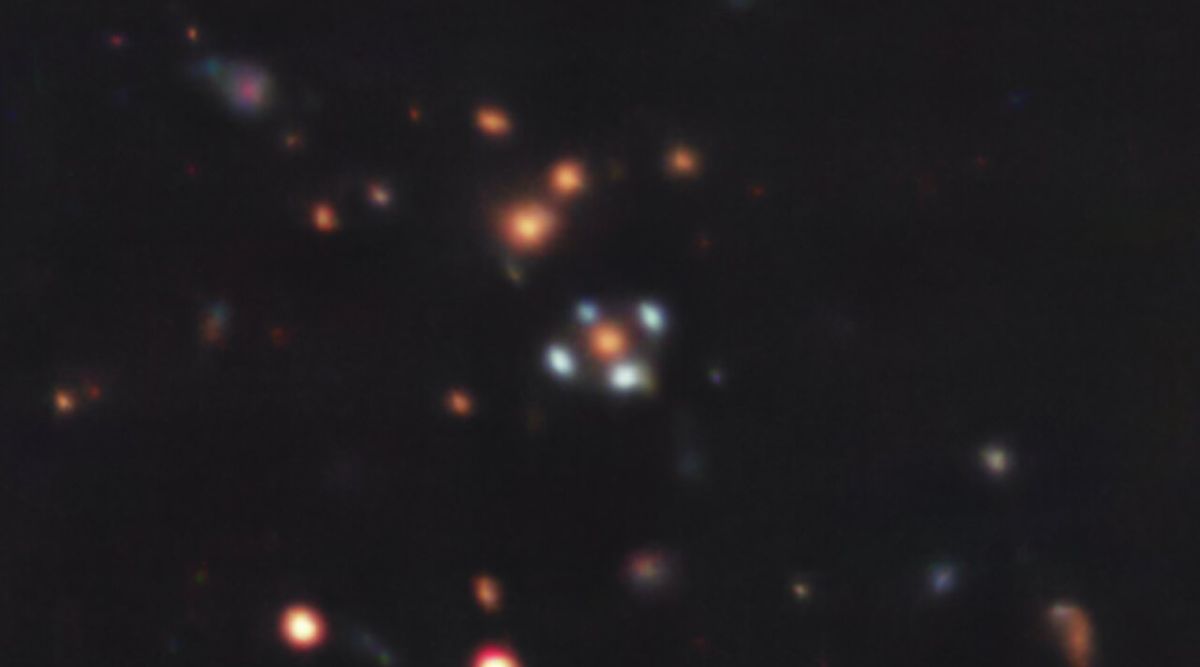This picture released by the European Southern Observatory shows many galaxies but the most striking one is probably the one blob of light surrounded by four dots, almost looking like a flower with blue petals. This image, taken with the observatory’s Very Large Telescope, shows what is known as an Einstein Cross.
The four petals that you can see from this image are actually images of a distant galaxy that is hidden behind the orange galaxy at the centre. We can detect the light from this hidden galaxy because of an interesting phenomenon called gravitational lensing.

The orange galaxy in the foreground bends light from the distant one due to the former’s immense mass, creating a sort of magnifying glass effect that is called a gravity lens. Due to this, we see many images of the distant galaxy, distorted and magnified The hidden one appears as four images around the lens galaxy because of the special ways in which the two are configured.
Most Read 1Chandrayaan-3 mission: Dawn breaks on Moon, all eyes on lander, rover to wake up 2As Indo-Canadian relations sour, anxiety grips Indian students, residents who wish to settle in Canada 3Karan Johar says Sanjay Leela Bhansali did not call him after Rocky Aur Rani: ‘He’s never called me but…’ 4Gadar 2 box office collection day 40: Hit by Shah Rukh Khan’s Jawan onslaught, Sunny Deol movie ends BO run with Rs 45 lakh earning 5Shubh’s tour in India cancelled: Why is the Canada-based singer facing the music?Also read | Supposed ‘alien corpses’ shown to Mexico’s Congress in testimony
The cross-like, or indeed, flower-like pattern created by the gravitational lens is called an Einstein Cross. More than just creating a pretty sight, this phenomenon also helps scientists learn more about distant galaxies that they would not have been able to study otherwise.
These observations were taken using the Multi Unit Spectroscopic Explorer (MUSE) at VLT. MUSE essentially splits the light coming from every point within the image into a rainbow or a spectrum. This spectrum gives scientists a lot of information about the objects within the instrument’s field of view.
Also ReadChandrayaan-3 mission: Dawn breaks on Moon, all eyes on lander, rover to …NASA’s Parker Solar Probe flies through powerful explosion from Sun, take…On India’s first solar mission, Aditya-L1 begins collecting data: ISROWatch this space: ‘Alien corpses,’ NASA UFO team director & Webb’s ‘life …
The results from the observations were published in a paper in The Astrophysical Journal Letters. It shows that the distant galaxy is forming stars at an especially rapid rate. The light that we observe left the galaxy when the universe was about 20 per cent of its current age. This means that studying the distant object gives clues about how galaxies formed in the early universe.


